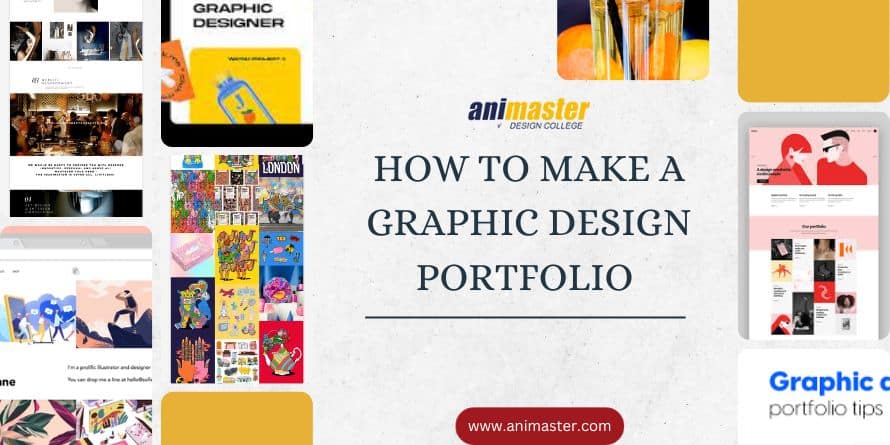
How to make a graphic design portfolio?
A professional portfolio is vital at any stage of your career – whether you are just a beginner or a seasoned graphic designer. If you seek to take your career to the next level and wish to intensify your practice, learning how to make a graphic design portfolio website to showcase to potential clients, can be a game changer. Many students of graphic design courses may find it a challenge to put a portfolio together, especially if they are unsure about their design style.
Firstly, most clients prefer to look at your pre-graphic (sample) designs and determine if you are the right fit for their needs. They examine your pre-designs as a reference to get a sense of your style and approach to designing. Owning an attractive design portfolio, can help you stand out in this crowded and competitive field by highlighting your unique creativity.
Do you stick with the question of what should be in the graphic design portfolio? Not sure about how to make an online portfolio that attracts professional attention? Inspire yourself first by referring other sample graphic design portflios online. Next, let’s look more deeply at what it takes to make a eye-stopping design portfolio and how a Certificate course in Graphic Design from a leading Design college can help in creating a great portfolio.
What is a graphic design portfolio?
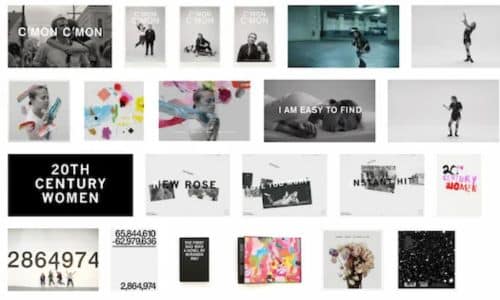
A graphic design portfolio is a collection of your unique works over a consolidated period of time (your own Graphic Design examples). A Graphic Artist portfolio provides potential clients with a well-rounded vision of your work, style, and other important background information that can truly assist in influencing hiring decisions and leaving behind a good impression.
Why do Graphic Designers Need a Portfolio?
Graphic designers require a portfolio to show their work to gain potential clients and also garner their reviews. Your visual designer portfolio is an opportunity to share your design experience and give potential leads an idea of what your design style conveys.
Designers are high in demand, scope of graphic design is ever-increasing and the industry is very competitive. As such, your online graphic design portfolio is a great opportunity to brand your uniqueness and show potential clients why they should pick you. Of course you need to invest your time and money in a good graphic design institute, where seasoned trainers can help you evolve as a graphic designer and teach you how to make a good graphic design portfolio. Ensure to check the graphic design course fees and that it suits your budget. Ensure flexible batch times that can accommodate your class at a suitable time. Further, do not forget to check whether the Certification awarded is well-recognized or not.
Types of graphic design portfolios:
- Logo design -A portfolio that is highly focused on logos shows the designer’s capability to create emphasized and memorable logos which are important for visual identity and branding.
- Typography/ Lettering -Lettering or typography portfolios emphasize the designer’s skill in selecting and creating visually appealing and communicative text.
- Illustration – Illustration portfolios show an artist’s talent in making paintings, drawings, or digital illustrations in numerous designed projects.
- Editorial Design– This kind of portfolio highlights a designer’s work in creating layouts and visuals for magazines and other printed materials.
- User Experience– UX portfolios demonstrate a designer’s expertise in crafting user-friendly and intuitive digital experiences for apps and websites.
- Interface Design-UI portfolios define a designer’s ability to create visually appealing user interfaces including menus and icons.
- Packaging Design-Portfolios in packaging design shows the creative and functional packaging for products by considering factors like branding and self-appealing.
- Environmental Design-Environmental design portfolios truly focus on creating design solutions for physical spaces such as exhibitions, retail stores, or public places
- Branding and Visual Identity– These portfolios highlight the designer’s work in developing brand identities and logos.
- Product design – A product design portfolio shows the designer’s ability to create physical products from sketches and 3D models.
Steps on how to build a graphic design portfolio
Even the best designs need a showcase. Without a platform, you miss out on clients, projects, and collaborations, which can hinder your career. To learn how to build a graphic design portfolio or a graphic art portfolio, take a professional course with experienced instructors. There are some awesome certified Graphic Design Courses in Bangalore that will help you achieve your desired career.
- Gather Your Best Work
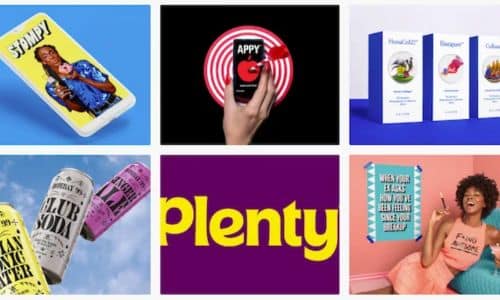
Have a design series you did for a recent client (that you think is your best work till now), but the quality of the images is poor or hard to see on a screen? Never fill your online portfolio with ineffective images with weird cropping that will turn off potential clients. Learn the importance of drawing in design to apply it and make sure you use high-quality images that will not seem and appear pixelated or blurry on a screen.
- Organize Your Work
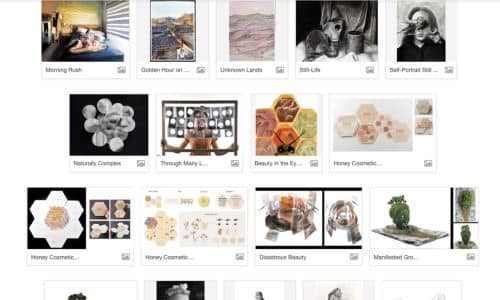
An unorganized portfolio with outdated work won’t attract clients or engage visitors. Ensure your design portfolio features current work, like a recent design commission by a client or logo design for a marketing campaign. An organized, updated portfolio will help you build a standout graphic design portfolio. Keep your site fresh with your latest and best work.
- Create a Personal Brand
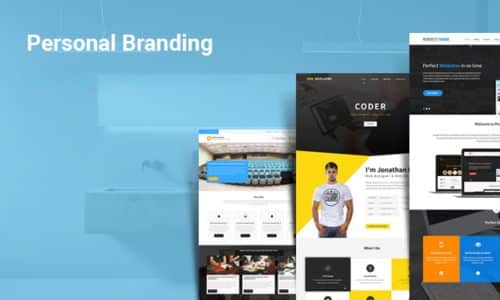
Creating a Personal Brand (Personal Branding) is one prudent step toward launching your professional graphic design portfolio. A professional brand gives your website a unique presence, enhancing recognition and making it memorable for clients. Keep your brand simple, often using your first and last names. This adds a personal touch and keeps your site relevant and on-brand.
- Design a User-Friendly Website
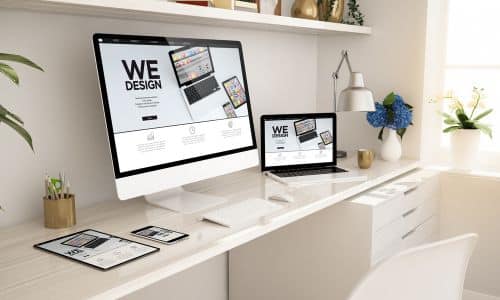
Attract potential clients and get them to stay on your portfolio site by making it easily accessible, interesting, and welcoming. It should be easy to navigate and user-friendly, with a design that isn’t overwhelming or confusing for visitors on the website. Create a portfolio website that enhances the beauty, uniqueness, and detailing of your designs, with an easy-to-access layout. This can be created using Adobe Portfolio or on showcasing platform (websites) like Dribbble and Behance.
- Describe your work
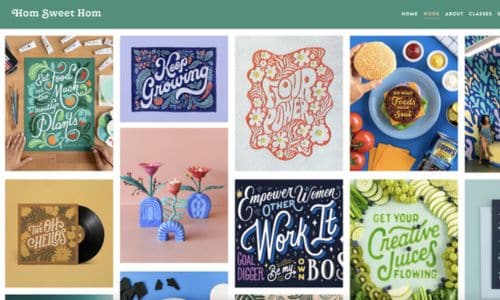
Organize your online portfolio by categorizing and listing your work into types like ‘logo designs’, ‘social media graphics’ or ‘advertising design campaigns.’ This kind of structuring makes it easy for visitors to navigate, showcasing your experience and versatility as a graphic designer.
- Showcase Your Skills
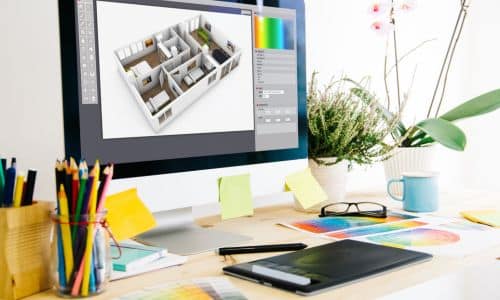
When building your portfolio site, aim to reflect your artistic journey and personal story. Choose design projects that illustrate your unique path and integrate your narrative into the site’s interface. Highlight key career moments and milestones to showcase your development as a designer and give visitors insight into who you are, in a creative manner.
- Quality over Quantity
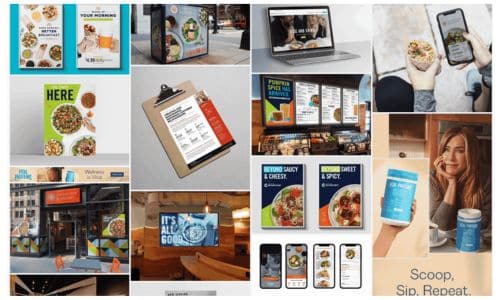
Focus on quality rather than quantity in your portfolio. Curate only your best work and ensure each image is high-resolution, loads quickly and easily, as also well-optimized with tools like Adobe Photoshop. This ensures your portfolio looks professional and demonstrates your commitment to effectively showcasing your unique design skills.
- Keep It Updated with Targeted Audience

To become a good graphic designer, Your portfolio site should connect with your target audience and meet their expectations. As you create your website, ask yourself, ‘Who is my target audience and how can I capture their attention?’ Tailor your site to engage them. If you’re new and have few projects, generate personal design work as a hobby project to showcase your skills and attract potential clients. However, while you are striving to become a good graphic designer, do read on to understand the advantages and disadvantages of graphic design.
- Ask for Feedback

The future of graphic design is immense and competitive. As such, do include a section of feedback within your designed portfolio to get the right reviews from the customers who visited your profile. From some existing designers and professionals, you may also ask them how to create a graphic design portfolio. This feedback provides you with the best way to analyze how your clients feel about your design and what their ratings are for your particular design style.
- Include bio and contact details
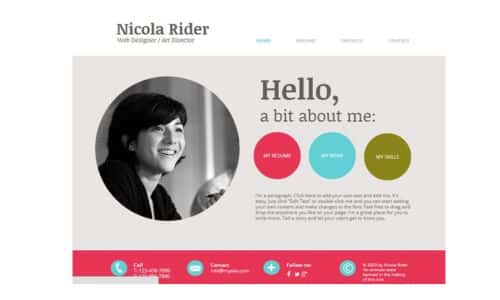
While your work can attract potential clients, visitors to your graphic design portfolio often want more information. Enhance your site with an About page, including your CV, bio, and professional background. Add personality to it, by sharing fun facts like your favorite graphic design magazines, number of hours it took you to complete a design etc. When creating a professional portfolio, ensure your contact details are easily accessible for clients to reach you.
- Publish it and then start to share

Finally, now that you’ve covered these essential steps, it’s time to publish your graphic design portfolio. You may want to go with your own website too—which includes certain things to review before, during, and after publishing to help your website live its best life and further help intensify your career. Before creating your own website, look for various free hosting providers like Aws, Hostinger, Wix, Freehostia, Infinityfree etc to enlist and give life to your website.
Once your portfolio is live, share your website with both your personal and professional networks, including family, friends, colleagues, your social media followers and everywhere you feel that you can easily get publicity.
Crafting Your Identity: The Importance of a Unique Portfolio
Standing out is ongoing, but portfolios offer opportunities to showcase your creative strengths and take the lead. When every design decision reflects your unique perspective and industry context, you shape empowering self-narratives that influence perception. This approach helps in understanding how to make a graphic design portfolio.
Highlight your passions with projects that emphasize authenticity, not just skills. Guide viewers to discover your unique problem-solving abilities, and let your creative confidence shine through your work.
Why Brand Matters: Integrating Branding to Enhance Portfolio Impact
A portfolio for designers enables them to craft unique brand identities that attract the right opportunities. Consistent logos, colors, fonts, and voice threaded throughout enhance cohesion and viewer connections. Strategically showcase your “creative vision” to leave lasting positive impressions, while highlighting the person behind the work and the specialized skills you offer.
Factors to strategize Portfolio Content for maximum Impact
Relevance and Alignment:
A graphic design artist portfolio should include projects related to your target field and goals. Designers interested in branding, for example, should highlight branding work in their graphic portfolio. This demonstrates that your abilities match your needs. Each portfolio piece should reflect your professional identity. Customize your portfolio for specific jobs.
Diversity and Depth:
Include 10-15 selected works in your graphic design portfolio to showcase your range. Feature a mix of simple and complex projects across print, digital, packaging, branding, UI/UX, and more, demonstrating well-rounded experience. Ensure your portfolio balances diversity and consistency while maintaining cohesion in style. Adding process sketches can also add depth.
Impact and Engagement:
Graphic design portfolios transform into strategic brand platforms, using UX interactions and narratives to emotionally engage target audiences. Communicating design thought processes keeps partners interested and fosters lasting brand impressions through compelling storytelling.
Consistency and Cohesion:
Consistency unifies graphic design portfolios into a cohesive experience. Maintain consistent branding, layouts, imagery style, and navigation across digital, PDF, and physical platforms. Align all elements, from logos to accent colors, with your personal aesthetics without overshadowing the content. Seamless UI/UX and a consistent voice highlight the designer’s craftsmanship and specialized skills across various mediums and contexts.
Adaptability and Flexibility:
Graphic designers must demonstrate versatility within specific career contexts. Customize online portfolio structure (hierarchy) and appearance (layout) for various devices, unlike modular print pieces adapted for presentations. Arrange works for easy swapping to suit evolving commercial roles. Show how custom brand voices translate across mediums, highlighting flexibility as a key design skill for effective communication.
Conclusion
Building and maintaining your online graphic design portfolio is an exciting thing to intensify your career within such an amazing field. The more attention and love you give to work, the more you will achieve from it.
Keep your portfolio updated and stay inspired with Animaster, India’s leading school of design. As the best graphic design college in Bangalore, with over 20+ years of experience, Animaster ensures that every designer must unlock their hidden talent and focus on realizing their own advantage in this competitive era by providing their comprehensive Diploma in Graphic design as well as its convenient graphic design courses online. Do contact us to talk to our academic counsellors for complete guidance.
FAQs
- How to make a graphic design portfolio better?
The graphic design portfolio must consist of the most impressive works that reflect the different fields and the creative skill. Make sure this has a logical structure and pay attention to the presentation format whether it is digital or physical to showcase your manifesto.
- Can you get a design job without a portfolio?
Securing a design job in a company without a portfolio is really challenging. A portfolio is sort of a resume that is a delivery sample of your abilities, experience and design style. It is also a breaking point in freelancing, without which a prospective hirer cannot even evaluate you or your work.
- Should my graphic design portfolio be a website?
Choosing a website as the showcase of your graphic design portfolio will bring more accessibility, interactivity and the ability to present digital projects efficiently. On the other hand, it is also important to emphasize the benefits of physical portfolios.
- How to create a good portfolio?
Step up your standards for a high-quality portfolio, carefully select the best of your works, sort them logically, and fluently express your skillfulness, style, and versatility.
- Is a PDF portfolio okay?
Sure enough, a PDF port fulfills digital sharing or physical printing demands. Polish its design, navigation should be intuitive and the output needs to be delivered properly to make a good impression.
- What is portfolio format?
Portfolio format is the design of your presentation and the display manner of your collection of work either in digital or physical format. It determines how your projects’ appearance is controlled, sorted, and navigated, critical for a successful exhibit of your abilities and a lasting impression on future employers.
- What are the Graphic design portfolio examples ?
There are numerous ways in which to display design work in designers’ portfolios; it could be about inspiration, immediate westernization, or following the industry standards. Work with these samples to grasp layout, organization and presentation techniques to design your standout portfolio.
8. What is Publication Design Portfolio?
A publication design portfolio showcases creative work for both web and print media, including print ads, brochures, and editorial layouts. For instance, it might feature a sleek magazine spread, a captivating website banner, or a visually compelling brochure design. This portfolio highlights your ability to blend text, images, and layout to create impactful visual communication.
9. Why is it important to follow a Graphic Design Company Portfolio?
Following the portfolio of a Graphic Design company is essential for you to be a successful Graphic Designer yourself. It will help you to get an idea of the industry changes and standards, how the designs are being executed, what kind of pattern/type of designs are being carried out in what companies and the reasons behind them. This conception will help you broaden your mind and aid you in getting a basis for ideating new creative designs for your own work.
10. Where can I get free assets and resources for my Graphic design?
Here are some great resources for free assets and resources for your graphic design projects:
- Unsplash: Offers high-quality, free-to-use images that can elevate your designs. Perfect for backgrounds, textures, and creative inspiration.
- Pexels: Another excellent source for free images and videos, Pexels provides a wide range of content for various design needs.
- Pixabay: Provides a vast library of free images, videos, and vector graphics, ideal for all types of design projects.
- Freepik: Offers a mix of free vectors, icons, and PSD files, perfect for adding polished elements to your designs.
- Icons8: A go-to for free icons, photos, and even music. It’s a versatile resource for any designer.
- BlenderKit: Ideal for 3D designers, this site offers free 3D models, materials, and brushes compatible with Blender.



